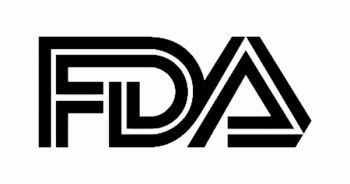
Peers & Perspectives in Oncology
- June II 2025
Myeloma Research Sees Transformation Following ODAC Support For MRD End Point
In an interview with Targeted Oncology, C. Ola Langren, MD, PhD, discussed the continuing impact of the groundbreaking FDA ODAC vote, the future of the Miami Myeloma MRD Meeting, and how researchers plan to continue expanding the role of MRD in myeloma and other hematologic malignancies.
In April of 2024, the FDA’s Oncology Drugs Advisory Committee (ODAC) unanimously approved the use of minimal residual disease (MRD) as an end point for accelerated approval of multiple myeloma therapies. Since then, trial investigators have rapidly adapted to the new paradigm, and new approvals based on MRD are on the horizon.
Additionally, there are more trends in MRD to look out for, including international adoption of the approval end point, updates to FDA guidance on MRD in drug development, and improvements to bone marrow and blood-based assays.
In an interview with Targeted OncologyTM, C. Ola Langren, MD, PhD, professor of medicine and chief of the myeloma division and the Myeloma Institute at the Sylvester Comprehensive Cancer Center at the University of Miami, discussed the continuing impact of the groundbreaking FDA ODAC vote, the future of the Miami Myeloma MRD Meeting, and how researchers plan to continue expanding the role of MRD in multiple myeloma and other hematologic malignancies.
Targeted OncologyTM: Could you explain your work supporting the use of MRD as an efficacy end point in in multiple myeloma?
C. Ola Landgren, MD: We were part of the work that led to the ODAC vote 12 to 0 in favor of MRD as a regulatory end point
Going forward, the deliverable is that trials can be done much faster. Instead of enrolling patients in a randomized trial that could take 2 years to complete and then wait another 10 or more years for the data to mature for PFS, you could capture MRD results 1 year after randomization, shrinking 10 to 15 years down to only 2 years of enrollment and 1 year to wait for MRD. After that, if the study is successful in showing higher rates of MRD negativity for a new therapy, that treatment could be approved based on accelerated approval, so patients can get access to new drugs 10 years sooner than just waiting for the clinical outcome. That's a huge step forward for the field and for all the patients.
What developments have there been in the use of MRD as an end point since the ODAC meeting?
Since the ODAC meeting in April of 2024, we have seen a lot of things happening. Many, if not all of the companies have implemented MRD as a coprimary end point. They have also included PFS. The reason you see both is because not every drug may drive the disease all the way down to MRD negativity, so when you develop a trial, you want to make sure you're not putting all the eggs in one basket. The companies will do both MRD and PFS. We have also seen that all the companies that have ongoing trials that used to have only PFS as the primary end point have…negotiated with the FDA to revise or amend their protocols to also include MRD as a coprimary end point. That’s a huge change for the field. Everything ongoing has been updated, and all the new trials have been including [MRD].
What is also going to happen is that the guidance documents from the FDA will presumably be updated whenever the agency is ready. We have worked very closely with the FDA for all these years when we filed the data for the ODAC review last year, and we have had multiple conversations after the ODAC [meeting]. They have told us that they are working internally, but it also has to go through all their different layers before it becomes an official document.
Lastly, it has also triggered [researchers in] a lot of other diseases to think about [using MRD]. The week after we went to ODAC, I got multiple emails and phone calls from different other disease areas asking if I could help develop MRD for many other diseases. I work on myeloma, but I'm happy to help and give feedback. We also published a review article that came out in January in Blood Cancer Discovery that summarizes the entire blueprint of how MRD could become an early end point for accelerated approval.1 My intention was to make sure that when people reach out for other diseases, we can point to this paper, because it has…the big picture as well as all the details of how the work has been done.
What is needed for the new FDA guidance on MRD to be released and what impact will it have?
The guidance document the FDA came out with for MRD most recently came out in 2020.2 In that document, they said that MRD can be used for surrogate end points in 2 different ways. One is that it is the end point for the full approval, but it could also be an early end point for accelerated approval. There are criteria for what an MRD end point has to include. There has to be a plausibility on a biological note, there have to be correlations on an individual patient level, and there has also to be evidence from clinical trials. There is a very specific list with criteria the FDA has spelled out, and that's available online for anyone to download.
That document came out in 2020 but the FDA ODAC meeting where MRD was voted 12 to 0 in favor of being an early end point for accelerated approval in myeloma [came] 4 years after this document, so there will presumably be an updated version of the guidance document based on that. But these documents don't come out once a week or once a month or even once a year. It takes a long time for the federal government to make sure that the guidance document is not something they need to go back and correct right away. They want to think it through. It goes through their medical review, their statistical review, legal reviews, and reviews for guidance documents. Going through all these different processes to ensure this document is a very valid document that is going to be received well, and it's also it's going to last for a while. That's why it takes a lot of time.
It’s the same as when we write clinical guidelines. We write different types of guidelines in the field, it takes a lot of time, and people also have to agree, so that can take some little extra time. I'm sure there are a lot of internal discussions on a lot of the details, but it will happen. I think it's going to come out…maybe in 6 to 12 months we'll see.
The guidance document is the general guidance for the use and the development of MRD in the setting as an early end point for accelerated approval, and that would be applicable to all the other diseases. For myeloma, we already have the ODAC vote 12 to 0 in favor of MRD being an early end point for accelerated approval in multiple myeloma. The companies have already revised their existing protocols and gone back to the FDA…and when they write new protocols, they [include MRD]. I think the guidance document is going to be a document that probably can save some of those discussions between individual companies and the FDA, but mostly I think it's going to help other diseases.
Another dimension of the complexity for drug companies that develop these trials [is that] they want to make sure the drugs are reviewed and approved so they can be available for patients, and this is a complicated process that usually includes many different countries around the world. From a drug company perspective, if you were to develop a study where PFS and MRD negativity are the end points here in the United States, and you get a readout for MRD after 2 or 3 years, if Europe has not yet approved MRD, then you have to wait for PFS. If you picked MRD as the only end point, you could think of a scenario where the drug could get approved in the United States, but that trial would not be valid in Europe until the regulatory agency in Europe has agreed that MRD is an end point.
We have also worked with the European Medicines Agency [EMA], and we have submitted documents to them as well for their review. But there are other regulatory agencies as well, and the EMA has not yet officially come back with their standing on this. It’s a very long and convoluted process, but the field is moving forward, and this gives you some further insights on what's going on behind the scenes.
Which trial regimens could get FDA approval based on showing MRD negativity?
The most recent trial that has read out where MRD was a coprimary end point is the CEPHEUS trial [NCT03652064].3 This is for patients [who] are newly diagnosed without the use of transplantation using a 4-drug vs a 3-drug combination. This is daratumumab [Darzalex]-based therapy, and it was the VRd [bortezomib (Velcade), lenalidomide (Revlimid), and dexamethasone] regimen with or without daratumumab. That trial was written in a very visionary way, and the sponsor Johnson & Johnson took a calculated risk when they wrote the protocol when they put MRD as a coprimary endpoint, because at the time the study was going to read out, MRD had not yet been voted for by ODAC. No one knew that there would be an ODAC meeting…when the study was launched.
I think it was a bold move, but now, when the ODAC meeting has happened, the data have come to the FDA. Now, all the stars are aligned. I think we will see more and more studies reading out [based] on MRD. There's a long list of trials with all the bispecifics, [etc]. All these things have already happened, and we will see more and more trials reading out this way.
Could you discuss the goals of the ADVANCE trial (NCT04268498) using MRD to guide treatment?
I designed a study when I led a program at MSK called MANHATTAN. This was the first 4-drug combination for newly diagnosed patients using KRd [carfilzomib (Kyprolis), lenalidomide, and dexamethasone] as a backbone with daratumumab. The MANHATTAN study showed that we could achieve MRD negativity in over 70% of patients, even in the absence of bone marrow transplantation.4 That study led to Dara-KRd coming into the NCCN guidelines as a category 2A approved therapy, [which] gave patient access. We have worked to test this regimen compared with the KRd regimen that we developed 10 years earlier when I was at the NCI, so we wanted to do a randomized trial of KRd vs Dara-KRd.
MRD is an early end point for [the ADVANCE] study, so it reads out after the completion of 8 cycles. The patient gets 4 cycles, then they can collect the stem cells and do another 4 cycles if patients are MRD negative. The protocol would keep patients on maintenance with a deferred transplant. If patients are completing the 8 cycles and they are MRD positive, if they have collected stem cells, the study would recommend a patient consider transplantation. A patient can go on the trial even if they don't collect the stem cells. It's open for both transplant-eligible and transplant-ineligible patients, because the primary end point is to determine MRD negativity after 8 cycles. These results have been submitted as an abstract, and
What was discussed at the Miami Myeloma MRD Meeting this year?
We started having annual meetings focusing on MRD in myeloma 11 years ago, and I made a pledge saying that we're going to have this meeting once a year until the FDA approves MRD as an end point for drug approval in multiple myeloma. We delivered on that in April 2024, but there have also been a lot of developments in terms of new assays, blood-based technologies, and different types of approaches in the bone marrow. There are imaging-based technologies as well, and of course, a lot of other questions that come into play in study design. There are all the patient perspectives and, beyond drug approval, MRD could probably also be used for treatment decisions.
The PERSEUS trial [NCT03710603] was published last year in the New England Journal of Medicine, showing MRD negativity was used in that trial to step down on the intensity of maintenance there.5 We see more and more trials having MRD as a tool to step up or step down the intensity of treatment.
So, we have decided to keep on going with this meeting. We talked to the FDA extensively about this, and the FDA has encouraged us to keep this meeting going, to keep the group together, because we have been inclusive for all these years. For more than a decade, we have done the meeting. We had the meeting in April 2025 in beautiful Miami for the eleventh year in a row, and we had representation from drug companies, academia, and patient organizations. We had invited the government, but because of some of the changes in Washington, DC, they were unable to join this year in person. But we had review presentations…based on their data. I would say we have all the bases covered this year as well. We had 90 people in person, and we had 807 attendees online, so almost 1000 people attended this workshop.
We got extremely good feedback. We continue to work on developing new technologies for tracking using blood-based technologies, and we also try to leverage the bone marrow–based technologies. People have already asked us for the date of the 2026 [meeting]. We are just about to sign the contract for the venue, so we will probably continue once a year for a long time, for many more years to come.
REFERENCES:
1. Landgren O, Devlin SM. Minimal residual disease as an early endpoint for accelerated drug approval in myeloma: a roadmap. Blood Cancer Discov. 2025;6(1):13-22. doi:10.1158/2643-3230.BCD-24-0292
2. Hematologic malignancies: regulatory considerations for use of minimal residual disease in development of drug and biological products for treatment. FDA. January 24, 2020. Accessed May 5, 2025. https://tinyurl.com/4z5jbmfr
3. Usmani SZ, Facon T, Hungria V, et al. Daratumumab plus bortezomib, lenalidomide and dexamethasone for transplant-ineligible or transplant-deferred newly diagnosed multiple myeloma: the randomized phase 3 CEPHEUS trial. Nat Med. 2025;31(4):1195-1202. doi:10.1038/s41591-024-03485-7
4. Landgren O, Hultcrantz M, Diamond B, et al. Safety and effectiveness of weekly carfilzomib, lenalidomide, dexamethasone, and daratumumab combination therapy for patients with newly diagnosed multiple myeloma: the manhattan nonrandomized clinical trial. JAMA Oncol. 2021;7(6):862-868. doi:10.1001/jamaoncol.2021.0611
5. Sonneveld P, Dimopoulos MA, Boccadoro M, et al; PERSEUS Trial Investigators. Daratumumab, bortezomib, lenalidomide, and dexamethasone for multiple myeloma. N Engl J Med. 2024;390(4):301-313. doi:10.1056/NEJMoa2312054









































